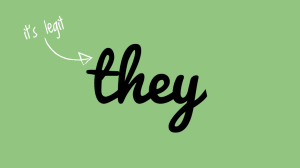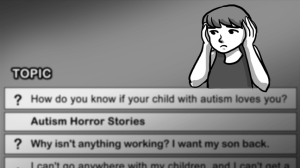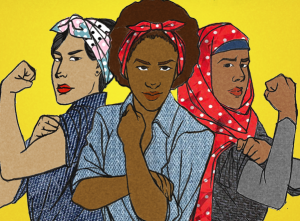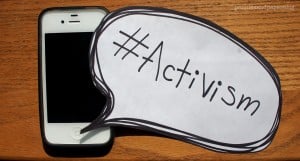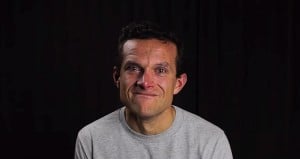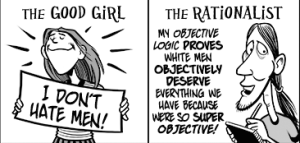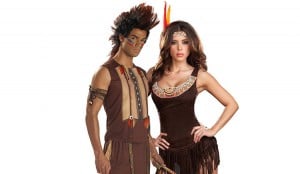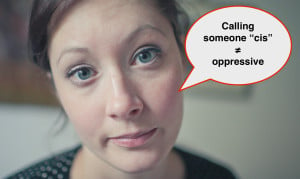
Cropped shot of two young adults hugging each other.
When the next anti-Black tragedy strikes, White allies will be out in force. They will be – as they should be – at protests, in conversation, and on social media declaring their solidarity and contributing ideas to the current dialogue on race and racial injustice.
For that, I’m really quite grateful. They will increase our chances of winning America’s 400-year-old race and class war.
Regular, everyday White folk who stand in solidarity with targeted communities – like the Black community – also continue a great tradition. Their efforts give momentum to the forces aligned to wipe out the evil that secured them their privilege.
From John Brown to Morris Dees, from Eleanor Roosevelt to Jane Elliot, from the anti-imperialists of yore (like Mark Twain) to today’s truth-tellers, educational reformers, and critical Whiteness thinkers, White allies both well-known and unknown make important contributions to change.
In times of anti-Black tragedy, however, White allies occasionally reach out to Black folks for validation of their goodness and for connection to our presumed pain. They may have a desire to express sympathy for a way they imagine us to feel. They may hope or assume that we need to “process” tragedy alongside them.
That’s why I’m sure that when the next anti-Black tragedy happens, some White ally or another will open a conversation with me about the tragedy and begin to apply the look.
You know the look. It tilts its head to the side and leans in close with wide-open eyes, wrinkles its brow upward in almost grandmotherly concern and peers directly into my own eyes as if to say, “Sarah, are you okay?”
Sometimes the person associated with this gaze even reaches out for a physical connection – an affirmation expressed in a simple gesture like a light touch upon my shoulder.
Both the gaze and the connection are outwardly directed to me, of course, but they actually express an internal, unsettled condition of the gazer’s own. And they seem to arise out of presumptions like these:
- My inner condition is the same as theirs when White supremacy strikes an innocent Black person.
- Whatever they just learned about America’s age-old violence toward Blacks is news to me, too.
- They are “in” with me enough to bring up a tragedy in conversation and then console me about my presumed feelings.
- I want to couple with them in sorrow at any moment they want to, and
- I have the same tolerance for viewing things like graphic videos of police shootings, which they forward me or tag me on for my comment.
These presumptions ignore what may actually be my way of coping and assume that I want to shift mental gears, and ponder carnage and hate.
They are often wrong in their presumptions and may even exacerbate whatever stress anti-Black violence already causes the people in my community and me.
But yet, as I anticipate the next tragedy, the next bombardment of imagery associated with it, and the complex (and sometimes incompetent) public dialogue that will surely follow, I also anticipate the look.
And of course, that look is pity: “a feeling of discomfort at the distress of one or more [people that] often has paternalistic or condescending overtones,” according to psychiatrist Neel Burton. Pity keeps the White supremacist power structure in tact; it reaches “downward” to make itself feel better by consoling whom it might perceive as an underling.
Many of us take that look from you to be pity, experience pity as condescending, and process it as an insult. At the very least, it suggests that we need your comfort for a reality we live every day.
Empathy, however, feels different on the receiving end. It feels like validation. Empathy is a “person’s ability to recognize and share the emotions of another person. […] It involves, first, seeing someone else’s situation from [their] perspective, and, second, sharing [the person’s] emotions, [possibly including] distress,” according to Dr. Burton.
While empathy and pity arise out of the same effort to tune in to another person, they are really quite different. Empathy opens up possibilities that pity closes.
While pity is busy assuming, empathy is questioning itself inwardly and outwardly wondering things, like how this person might be feeling and what their perspective on this tragedy in their community is.
From there, empathizing allies might understand many things that pitying allies don’t even consider.
1. We Could Be Feeling Enraged and In Need of Space
There is a vast difference in emotional experience between being a member of a group targeted for hatred and being a member of an outside group that cares about what the targeted group is going though.
What’s experiential and personal for one group is far more ideological for others, and the difference between the two realities is exacerbated in times of crisis.
A generation ago, psychiatrists Grier and Cobbs famously pointed out that rage is a frequent response to resurgences of oppression because it is an underlying condition – in some ways, one unique to the Black experience of living under White supremacy that hasn’t changed much in recent years.
2. We Could Be Feeling Cynical and Disconnected from Our Own Empathy
In some form or fashion, every person targeted for race-based violence is somehow kindred to me.
This is a strength of minority communities. How we grieve perfect strangers has been well-documented: TaNehisi Coates’ portrayal of his young son’s grief over the acquittal of Darren Wilson in the killing of Michael Brown is a poignant literary example. Alan Pelaez Lopez’s expression of their own grief – “When Trayvon Martin was murdered, I cried in the shower for weeks” – is another.
But as crass as this may sound, sometimes we weary of grieving for strangers and receive More Bad News with cynical detachment. Each killing is, at once, a unique and terrible tragedy and simply one more thing in a mountain of cruelties lobbed against our kind. Each killing is another reminder of my country’s many ways of undervaluing my humanity.
When I’m operating out of that emotional space, I’m not operating out of my natural empathy or sorrow or even rage. I’m feeling cynical about the land of the free and in no mood to connect with idealists in shock.
People of color in this space could even be angry at White allies for what allies represent at that moment: people privileged to experience certain types of awfulness from the outside.
In the emotional roller coaster ride of American racism, people with race and class privilege have a choice when and whether to ride. People of color do not.
3. We Could Be Feeling Stressed Out, Trying to Push Bad News Out and Focus on Our Immediate Lives
I may be in joy when bad news comes down, and I may choose to stay in that joy.
I may be juggling the papers I grade, the child I raise, the book I write, the loved ones I tend to, and so on when bad news comes down. Conversations about tragedy take my mind off what I need to focus on and hand me the twin burdens of terrible imagery and intense emotion.
Especially when it comes to social media, I often choose to delay conversation about tragedy. In fact, many people of color delay logging in to social media when we know it’s going to be rife with imagery and dialogue about White supremacist violence. Similarly, we may delay talking about it until we have distance and mental space.
4. We Could Be Empty of Intense Reactions
We may not be surprised enough to have the same feelings that people newer to racist violence do when something terrible happens to an undeserving person. What’s new and shocking to some allies is centuries-old news to us.
Like most people of color, my life experience contains innumerable run-ins with racists. Like most people of color, I can recount interaction after interaction in which I was the target for some insult, some obstruction of my freedom, some exclusion, some judgment, some threat or act of violence.
My field of study (Black literature) further lays out before me the entire history of those obstructions, exclusions, judgments, threats, and acts. So nothing that comes across my TV screen or computer is new to me when it comes to the terrible things White supremacists can do to people of color.
In fact, we’ve been saying forever, “Look what’s happening to us!” And we’ve been met with less concern than we should have been from the outside world.
As a result, we’ve settled into the us/them analysis that we understand what goes on with us and most outside people don’t. But today’s technology makes it impossible for “outside people” to turn away.
We realize that. We sense the shock. If we seem blasé (especially about nonfatal incidents), it’s only because racism not new to us. We’ve been sounding the alarm forever.
5. We Could Be Coping Just Fine
For many people of color, being a minority in the United States makes resilience almost a necessity.
According to Psychology Today, “resilient people are blessed with such an outlook that they are able to change course and soldier on” when tragedy strikes. Resilience, as a human quality, is “that ineffable quality that allows some people to be knocked down by life and come back stronger than ever.” And its prevalence among Black Americans is well-known and now even recognized by science.
But long before the field of psychology recognized resiliency as a common trait among Black folks, members of oppressed minorities were aware of our individual and collective strengths. Our humor, our support of one another, the clarity of our perspectives, and our simple ability to “tough it out” or work through tyrannical times are potent sources of pride.
Pity undermines that significantly.
Even empathizing White allies should assume the sophisticated nature of our coping and learn from it. We could be coping just fine out in public and waiting for an opportunity to connect with our in-group loved ones to vent in a comfortable way.
Somber and silent, or enraged and raging, my immediate need on some tragic occasions is to join in collective, in-group consolation.
When George Zimmerman was acquitted of killing Trayvon Martin, I didn’t feel resilient or even strong, though. I felt like I’d been punched in the chest, like I was going to fall. I couldn’t stop thinking about Martin’s parents and how they must’ve felt.
When Dylann Roof shot up the church in South Carolina, I wanted to curl up and weep. I couldn’t stop thinking about my church, about all the prayer services I’d been to, about the peaceful strength of the elders, about how safe my church feels in those elders’ presence.
It overwhelmed both my consciousness and my coping that the safety of a church sanctuary could be penetrated so violently 50+ years after the Klan bombing of the 16th Street Baptist church in Birmingham, Alabama.
In both cases, I just wanted to be around people who I knew would have the same feelings.
Pelaez Lopez explains it well: “There are times that I need to be with Black people only, and that’s fair. … [I]t wasn’t until I [talked about the murder of Trayvon Martin] with four other Black folks that I was able to feel as if I would make it through life.”
Allies of us could surmise this need for retreat and regrouping. True allies of us will try to do so the next time tragedy strikes.
***
When I hear about modern-day lynchings, the uninformed arguing and excuse-making that substitutes for public dialogue, and the innumerable ways that Americans cling to the hierarchies set up during slavery, I am never ever surprised by anti-Black, state-sanctioned violence.
I am profoundly saddened.
I am not saddened in a way that pity will help, though; I’m saddened in a way that will be alleviated by the eradication of race-based hatred and a reign of peace.
I’m uplifted by all work toward that goal and will continue that work in solidarity with other minorities and with White allies alike. It’s my hope that our White allies will preserve and strengthen that sometimes tentative unity – doing so with more insight into the range of our (Black) responses to anti-Black violence.
[do_widget id=’text-101′]
Sarah T. is a native of suburban Philadelphia, a writer, editor, writing instructor, wife, mother, and critical race theorist living in Anacostia, SE, Washington, DC. Her creative work has appeared in Azure literary magazine and the Sally Hemings Dreams zine, and she expects her book-length collection of poetry and prose to be out in spring. Her reflection on the sankofa ethic in education will appear this October in the Black Lives Matter special issue of Radical Teacher, and her online teacher re-education resource and blog – the Sankofa Love Project – is expected to go live this coming summer.
Search our 3000+ articles!
Read our articles about:
Our online racial justice training
Used by hundreds of universities, non-profits, and businesses.
Click to learn more






